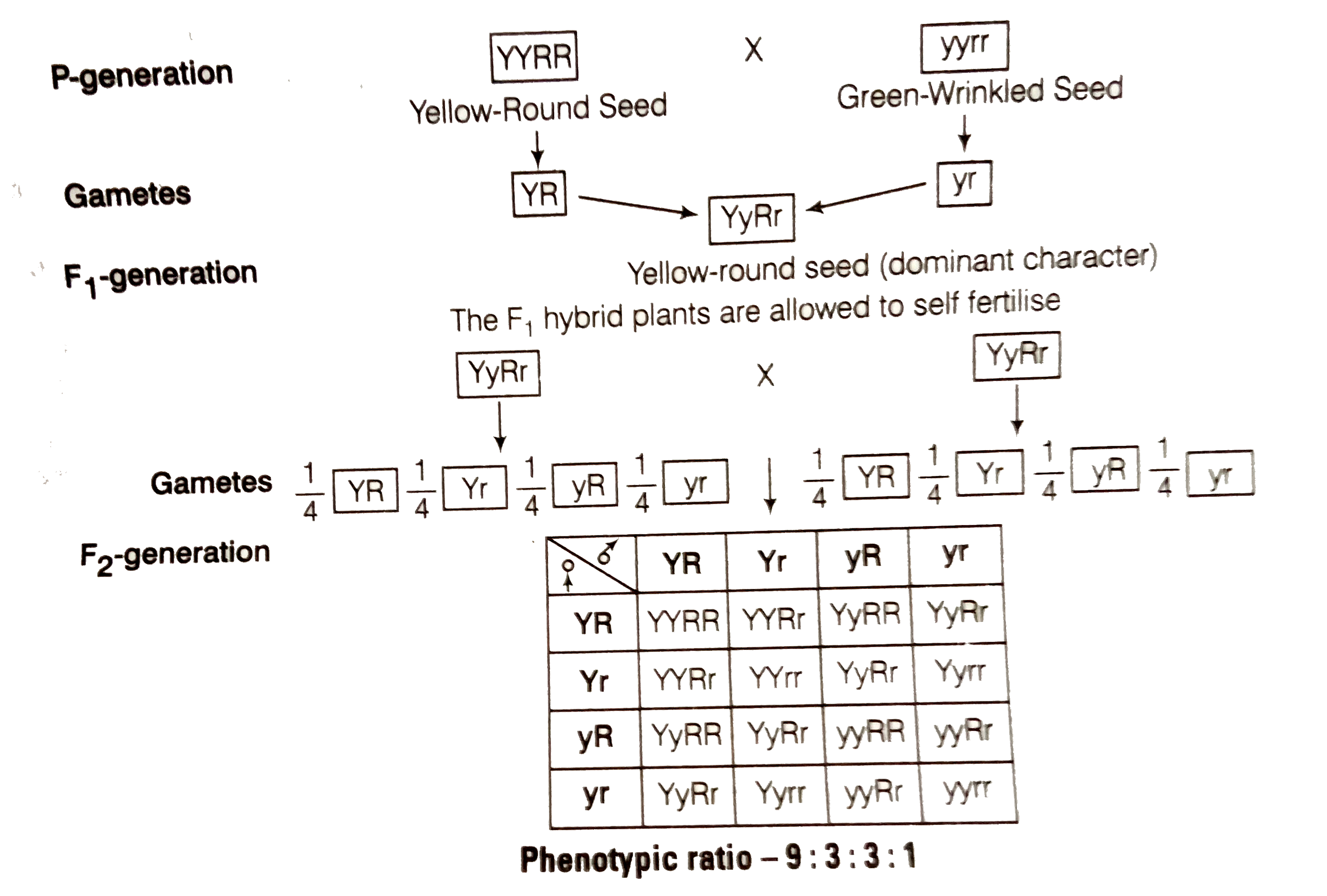In a dihybrid crossm if you get 9:3:3:1 ratio it denotes that
the alleles of two genes are interacting with each other
it is a multigenic inheritance
it is case of multiple allelism
the alleles of two genes are segregating independently
The correct Answer is:D
Alleles of two genes are segregating indimendently. It can be explained as. Suppose crosses are made between a pea plant with round and yelow seeds and one with wilkled and green ones.
All F1 hybrids give yellow and round speed. Since yellow colour is dominant over the green and the round shape is dominat over the winkled.

The outcome of the dihybrid cross make it very clear that segregation of the seed colour is independent of the speed shape and both the parental and new combinations of the characters appear in the F2 offspring, i.e., assortment of genes of one pair is independent of the other pair.
When the alleles of two genes are interacting wiht each other one may dominate over other or become recessive. During a multigenic inhertance we describe a characteristics that is specified by a combination of multiple genes. Jultiple allelism is a type of non-mendelian inhertance pattern that inveolves more than just the typical two alleles.
Topper's Solved these Questions
Similar Questions
In a dihybrid cross, F2 phenotypic ratio is 13:3. It is case of
View SolutionWhich is / are correct is correct about F2 generation obtained by Mendelian dihybrid cross?
A. Phenotypic ratio is 9:3:3:1
B. The ratio of homozygous plants is 1:1:1:1
C. 1/4 of plant are completely heterozygous
D. F2 generation is obtained through selfing of F1 plants
View Solution
Knowledge Check
In a dihybrid cross, if you get 9:3:3:1 ratio, it denotes that:
AThe alleles of two genes are interacting with each other.BIt is a multigenic inheritance.CIt is a case of multiple allelism.DThe alleles of two genes are segregating independently.In a dihybrid crossm if you get 9:3:3:1 ratio it denotes that
Athe alleles of two genes are interacting with each otherBit is a multigenic inheritanceCit is a case of multiple allelismDthe alleles of two genes are segregating independentlyIn a dihybrid cross F2 ratio of 15 : 1 is due to:
Aduplicate genesBrecessive epistasisCdominant epistasisDsupplementary genes
In a dihybrid cross between two heterozygotes, AaBb × AaBb, if we get a 3:1 ratio among offspring, the reason would be
View SolutionIn a dihybrid cross between two heterozygotes, AaBb × AaBb, if we get a 3:1 ratio among offspring, the reason would be
View SolutionThe ratio of 9:3:3:1 is due to
View SolutionThe ratio of 9:3:3:1 is due to
View SolutionA dihybrid test cross-yeilding a result of 1 : 1 : 1 : 1 ratio is indicative of:
View Solution
